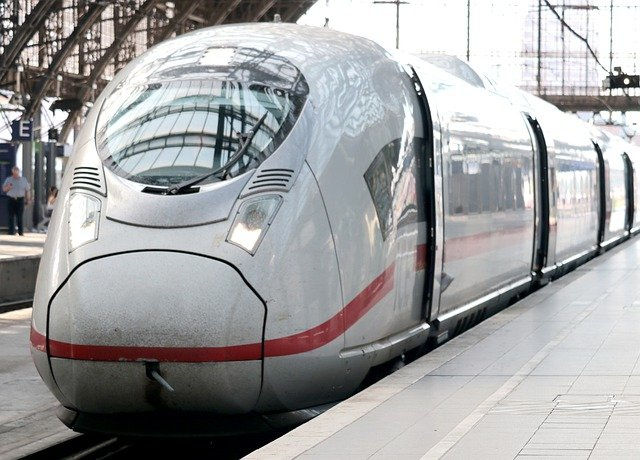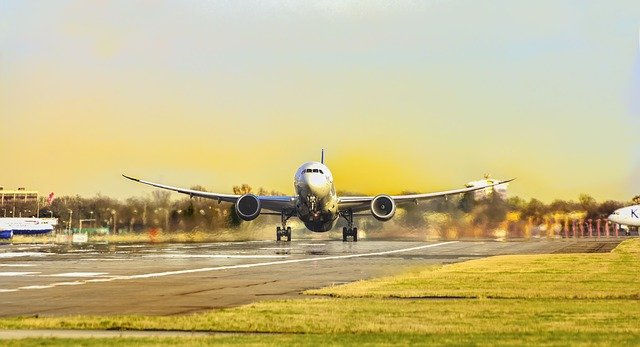discover the best means of transportation in Europe!
- Front Door Marketing

- May 13
- 4 min read
Most of the time, those planning a trip to Europe intend to include several cities and countries in their itinerary, making it possible to visit many destinations in just a few days. With that in mind, I decided to write this post about the best means of transportation in Europe to help you optimize your time!
Before deciding on your itinerary and the best means of transportation in Europe, open Google Maps and check the distance between the cities and the best order to follow. To save time and money, it's ideal that your route includes nearby cities, as this way you can use other means of transportation besides airplanes.
Best means of transportation in Europe
Train
One of the best means of transportation in Europe and one of the most used by both tourists and locals!
In Brazil, we are not used to traveling by train. There are a few options, but they mostly consist of tourist trains, such as the Maria Fumaça that runs from São João Del Rei to Tiradentes, for example.
In Europe, however, commuting by train is common, and it’s possible to travel the continent from north to south. Regardless of your travel style, you need to have this experience at least once, even if it’s just to cross it off your bucket list.

Pros x Cons
Pros – variety of schedules (depending on the origin/destination, there are several trains per hour), time saving (they don’t delay departure, no traffic jams, stations are located in city centers), comfort.
Cons – generally, traveling by train is more expensive than by bus, and sometimes even more expensive than flying.
Main companies
There is a wide range of schedules, companies, and prices. I would say there's something for every budget. From basic trains (with no onboard service, no wi-fi, or comfortable seats) to the fanciest ones, that travel through the Swiss Alps (among other places).
Usually, the companies connect destinations within the country of origin and cities/countries that share borders. For example, National Rail, Trenitalia, and Deutsche Bahn operate trains within the United Kingdom, Italy, and Germany, respectively.
I don’t recommend buying rail passes like Rail Europe’s, as they are usually more expensive. But each case is different, so the ideal is to research all options. Visit each transport company’s website and also the websites of companies that sell passes, and compare prices.
Plane
Undoubtedly, it is the fastest way to travel from one place to another, but in the end, it’s not always the most efficient. What do I mean?! Let me explain!
Airports are usually located further away from the city center, so you’ll spend more time traveling to them and possibly more money as well. Also, you need to arrive at least 1 hour early for boarding.
In the case of trains and buses, stations are located in the city center, and there’s no need to arrive too early, 15 minutes in advance is fine.
So, if the distance is short, less than 300 km, traveling by plane may not be the most cost-effective option.
Pros x Cons
Pros – shorter travel time and more comfort (depending on the airline).
Cons – the big downside is the price. If you don’t find a ticket with a low-cost airline, you may end up paying a much higher fare.

Main companies
The airplane is among the best means of transportation in Europe due to the variety of companies operating there, especially low-cost airlines, which make ticket prices more affordable.
Among the low-cost airlines, the most well-known is the Irish Ryanair, which has routes to most countries on the continent. Other airlines with many routes are Vueling (Spanish) and EasyJet (British).
Bus
Among the best transportation options in Europe, the bus is the cheapest! It’s not always the most comfortable or the fastest, but if you have time and a tighter budget, it can be a good alternative!
Pros x cons
Pro – ticket prices. If you book in advance, you can find several promotions, even.
Cons – comfort and travel time. When traveling by bus, you may get stuck in traffic jams, for example

Main companies
The best-known is Flixbus, which has a large fleet and many destination options, making it possible to travel through several countries. There are many other smaller companies that operate more regionally. The tip is to research all the options and see which one best suits your plans and budget.
As an extra option, there is the possibility of renting a car to get around. I think it’s a great idea, but the cost-benefit is not always worth it. In this case, do some research beforehand on the roads you intend to travel, check if there are tolls, border crossing fees, car rental prices, and if it’s worth returning the car in a different location from where you picked it up.
To sum up, the best means of transportation in Europe will depend on a number of factors, such as budget, available time, travel style, etc. Ahh, and nothing stops you from mixing the experiences, it’s totally possible to travel by train, bus, plane, and car all in the same trip to the Old Continent!
Now you already know the main and best means of transportation in Europe. Which one fits your travel style best? If you still have questions, drop your comment below! Kisses and see you soon!!
.png)



Comments